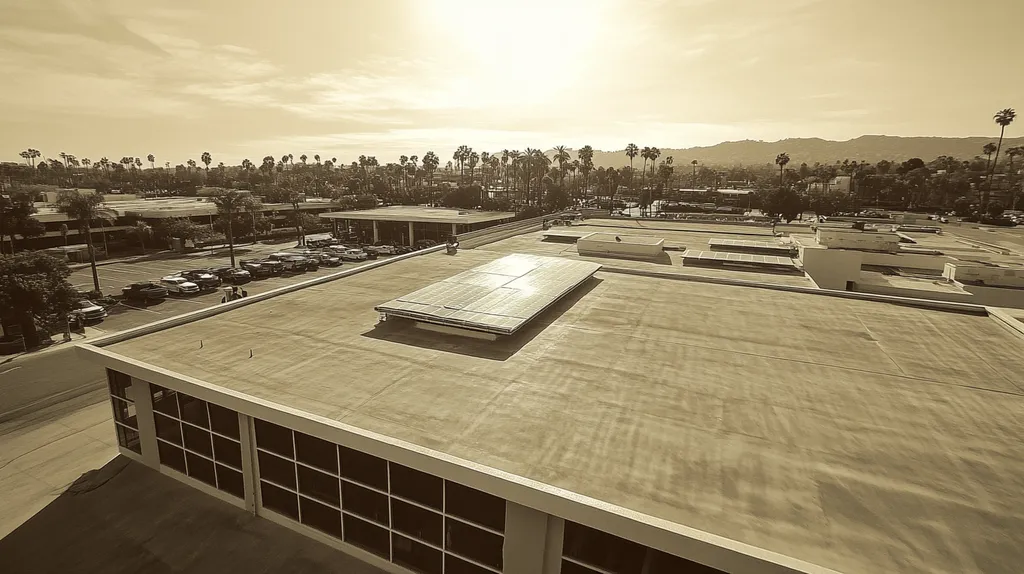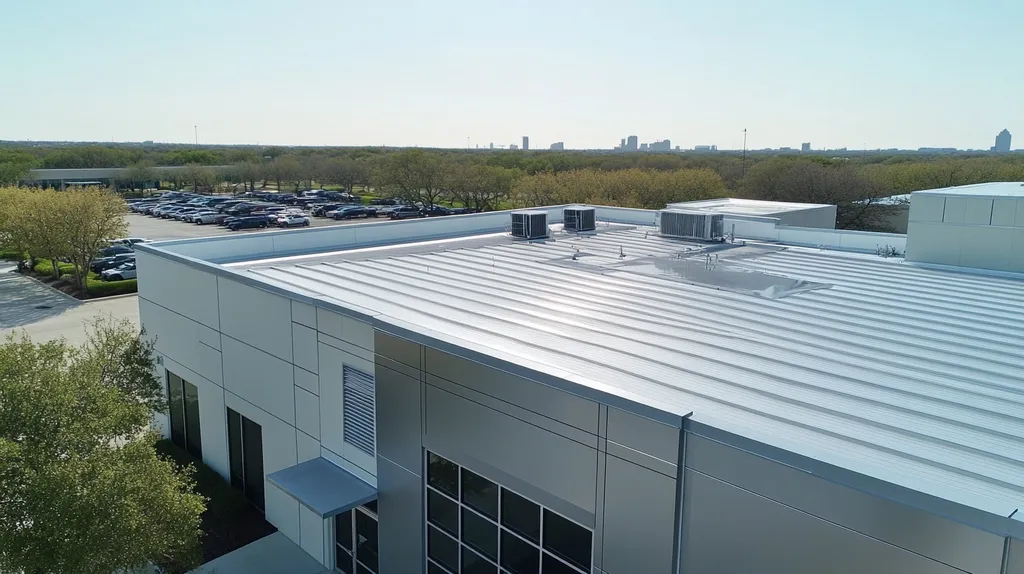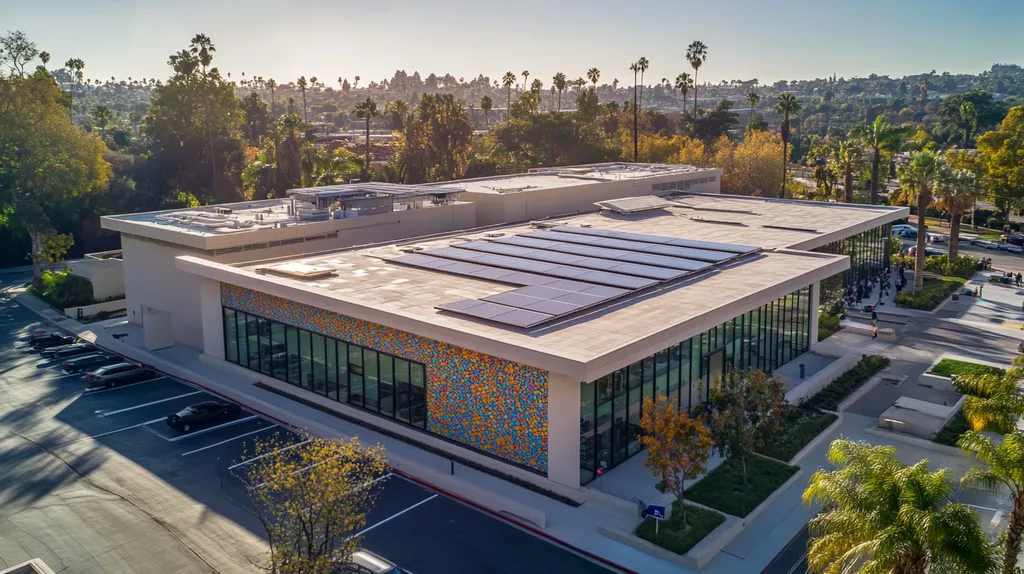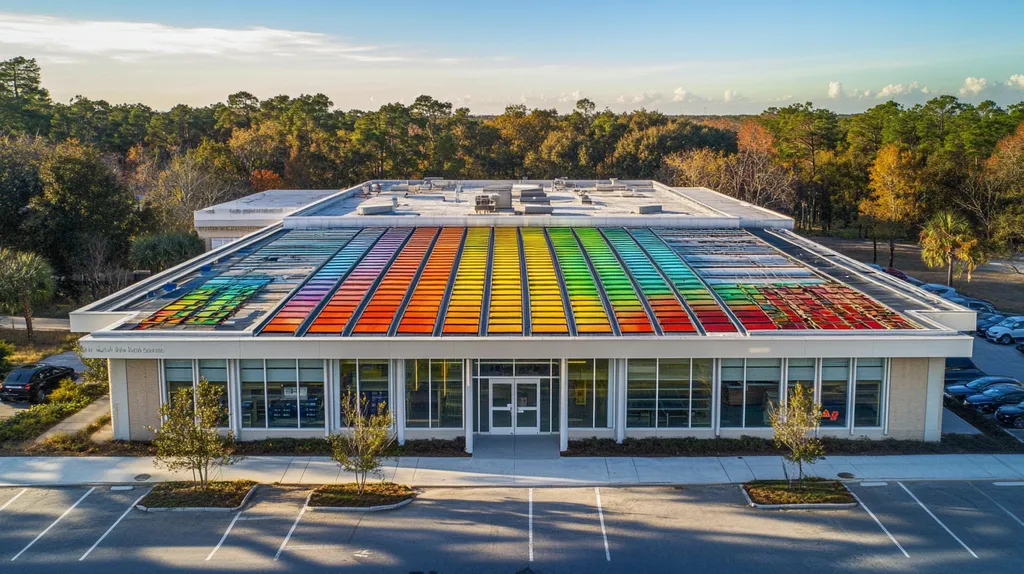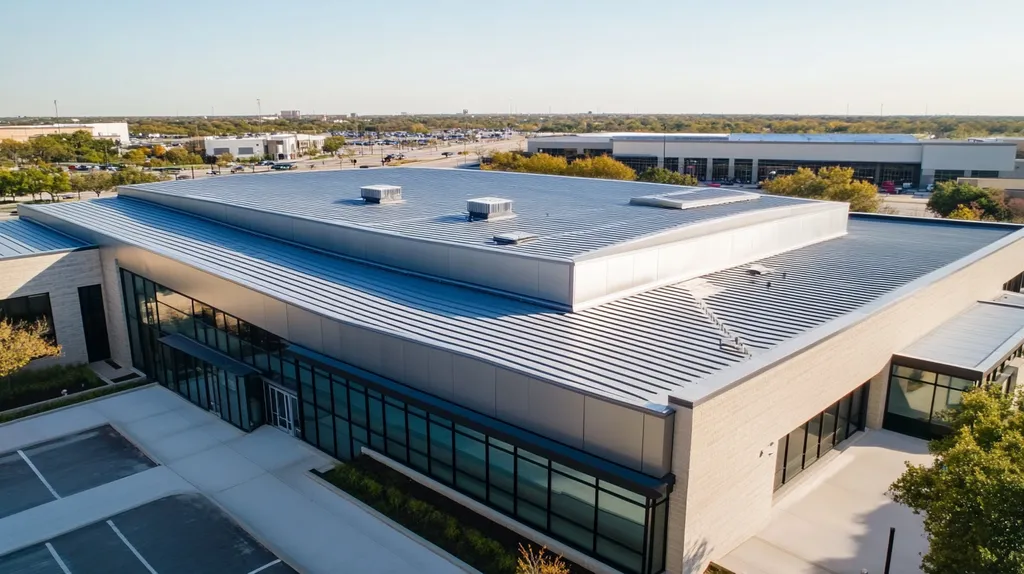Welcome to today’s Battle Royale featuring two roofing heavyweights: “Safety Harness Systems” in the east corner versus “Guardrails” in the west!
Tonight’s showdown pits these contenders against each other across six punishing rounds designed to test every aspect of their performance for Industrial Roof Installation Safety Measures.
At stake? Millions in potential costs, decades of building protection, and the critical performance demands of modern commercial and industrial facilities.
Our professional judging panel will evaluate each round on technical merit, real-world performance, and value delivery. After all six rounds, we’ll declare our ultimate champion.
Ladies and gentlemen, facility managers and building owners… it’s time to rumble!
ROUND 1: INITIAL COSTS & INSTALLATION
When it comes to industrial roof safety, the financial stakes extend far beyond initial investments. Falls from heights remain the leading cause of death in construction, with devastating impacts on both human lives and business operations.
The choice between safety harness systems and guardrails represents a critical decision point that shapes project timelines, worker safety, and long-term operational costs. According to OSHA, specific physical requirements and installation protocols must be met for all rooftop safety systems, making proper initial setup crucial for both compliance and effectiveness. (source: OSHA)
Material Expenses
Safety harness systems present lower upfront costs, with basic systems starting around $200 per worker. However, these systems require multiple anchor points and lifelines, which can increase total material costs significantly for larger roofs.
Guardrail systems typically cost more initially, averaging $15-20 per linear foot installed. Yet their permanent nature eliminates the need for repeated equipment purchases and reduces ongoing certification expenses.
While both options require significant investment, guardrails offer better long-term value through reduced replacement needs and lower maintenance costs. ADVANTAGE: GUARDRAILS
Installation Complexity
Safety harness systems demand precise installation of anchor points and careful testing of each component. Their setup requires specialized knowledge and often necessitates third-party certification.
Guardrail installation follows straightforward mechanical assembly processes that most roofing crews can handle efficiently. The systems typically come with clear mounting instructions and require minimal specialized training.
Given the simpler installation requirements and reduced need for specialized expertise, guardrails prove more efficient to deploy. ADVANTAGE: GUARDRAILS
Project Timeline
Installing safety harness systems can extend project timelines due to required worker training and certification processes. Each worker must demonstrate proficiency before work can begin, often adding days to the schedule.
Guardrail installation proceeds more quickly, with minimal impact on overall project timing. Once installed, workers can immediately begin roof work without additional safety training delays.
The reduced training requirements and faster deployment make guardrails the clear winner for project efficiency. ADVANTAGE: GUARDRAILS
ROUND 1 WINNER: GUARDRAILS
ROUND 2: DURABILITY & LIFESPAN
Industrial roof safety systems face constant exposure to extreme weather, UV radiation, and physical stress. Their durability directly impacts both worker safety and facility maintenance costs, with system failures potentially leading to catastrophic accidents and significant liability exposure.
Understanding how different safety measures withstand these challenges over time is crucial for making informed investment decisions that protect both workers and bottom lines. Recent data shows that properly maintained safety systems can extend roof lifespans by up to 25% while reducing workplace incidents.
Weather Resistance
Safety harness systems require regular inspection and replacement of components exposed to weather elements. Their synthetic materials can degrade from UV exposure and temperature extremes, potentially compromising safety integrity within 2-3 years of installation.
Frequent replacement cycles increase long-term costs, while degraded components may not show visible signs of wear until failure. Even with proper maintenance, harness systems typically need complete replacement every 5-7 years.
Guardrail systems constructed from galvanized or powder-coated steel offer superior weather resistance. When properly installed, these fixed systems can maintain their structural integrity for 15-20 years with minimal maintenance.
The minimal impact of weather exposure and longer service life make guardrails the clear choice for weather durability. ADVANTAGE: GUARDRAILS
Impact Resistance
Safety harness systems can absorb significant force during fall arrests but may require replacement after any major impact. Their dynamic nature means individual components face varying stress levels, requiring careful monitoring and selective replacement.
Warning lines and anchor points must meet specific force resistance requirements, with supporting components capable of withstanding at least 16 pounds of force without failure. Physical barriers like covers must support twice the weight of anticipated loads. (source: OSHA)
Guardrails provide consistent impact protection without requiring replacement after collisions. Their rigid construction spreads impact forces across multiple attachment points, reducing the likelihood of catastrophic failure.
The superior impact absorption and reduced replacement needs favor fixed barriers. ADVANTAGE: GUARDRAILS
Maintenance Requirements
Safety harness systems demand regular inspections of all components, including anchors, lifelines, and personal protective equipment. These inspections must be documented and performed by qualified personnel, creating ongoing operational overhead.
Component replacement and recertification costs can accumulate quickly, especially in facilities with multiple active systems. Training requirements for proper maintenance add another layer of complexity and expense.
Guardrail systems require only annual structural inspections and occasional tightening of mounting hardware. Their simple design means maintenance can typically be performed by in-house maintenance staff without specialized certification.
The minimal maintenance demands and lower specialized labor requirements make guardrails more cost-effective. ADVANTAGE: GUARDRAILS
ROUND 2 WINNER: GUARDRAILS
ROUND 3: PERFORMANCE FACTORS
Safety system performance during industrial roof installations directly impacts worker protection, project efficiency, and regulatory compliance. With rooftop accidents remaining a leading cause of workplace fatalities, choosing between safety harness systems and guardrails requires careful evaluation of how each option performs under real-world conditions.
The effectiveness of these systems extends beyond basic fall protection to influence worker confidence, installation speed, and long-term maintenance requirements. Understanding these performance factors is crucial for making decisions that protect both workers and project timelines.
Installation Efficiency
OSHA requires employers to implement specific safety systems for roofing work, with detailed requirements for measurements, strength criteria, and proper installation. Warning line systems must maintain specific distances from roof edges, include high-visibility materials, and resist tipping forces. (source: OSHA)
Safety harness systems require precise setup and adjustment for each worker, creating significant downtime during installation. Workers must repeatedly check and adjust their equipment, interrupting workflow and extending project timelines.
Guardrail systems create an immediate, stable work environment once installed. Their fixed nature eliminates the need for constant safety equipment adjustments, allowing workers to maintain focus on installation tasks.
The simplified setup and reduced worker adjustment time make guardrails more efficient for maintaining consistent workflow. ADVANTAGE: GUARDRAILS
Worker Productivity
Worker productivity directly correlates with the functionality of safety systems during roof installation. Safety harness systems can restrict movement and require frequent adjustments, leading to workflow interruptions.
The constant management of harness equipment often diverts worker attention from critical installation tasks. This split focus can slow progress and potentially compromise installation quality.
Guardrail systems provide unrestricted movement within the protected area, allowing workers to concentrate fully on their tasks. The psychological benefit of visible protection often increases worker confidence and speed.
With fewer interruptions and greater freedom of movement, guardrails enable higher productivity levels. ADVANTAGE: GUARDRAILS
Long-Term Safety Compliance
Maintaining safety compliance throughout the installation process requires consistent system performance. Safety harness systems demand regular inspections and documentation of component integrity.
The multiple connection points and moving parts in harness systems increase the potential for compliance failures. Each component must meet specific strength requirements and undergo frequent testing.
Guardrail systems offer straightforward compliance verification through simple visual inspections. Their fixed nature reduces the number of potential failure points and simplifies ongoing compliance management.
The reduced complexity and easier verification process make guardrails more reliable for maintaining compliance. ADVANTAGE: GUARDRAILS
ROUND 3 WINNER: GUARDRAILS
ROUND 4: MAINTENANCE REQUIREMENTS
The long-term viability of industrial roof safety systems hinges on rigorous maintenance protocols. Studies show that 70% of rooftop safety system failures occur due to inadequate maintenance rather than initial installation issues. These failures not only compromise worker safety but can result in significant financial penalties and project delays.
Understanding the maintenance demands of different safety systems is crucial for facility managers tasked with protecting both workers and budgets. The choice between safety harness systems and guardrails significantly impacts ongoing operational costs and safety compliance.
Inspection Frequency
Safety harness systems require comprehensive daily inspections of all components before each use. These inspections must verify the integrity of anchor points, lifelines, and personal protective equipment, creating significant operational overhead.
Each worker must document their equipment checks, and any signs of wear or damage require immediate replacement. This constant vigilance adds considerable time to daily operations and increases the risk of overlooked safety issues.
Guardrail systems typically need only quarterly structural inspections and annual certification reviews. Their fixed nature and durable construction minimize the potential for daily wear and reduce inspection requirements.
The reduced inspection burden and lower risk of oversight make guardrails more manageable for maintenance teams. ADVANTAGE: GUARDRAILS
Component Replacement
Safety harness systems contain multiple wear items that require regular replacement. Synthetic materials degrade from UV exposure and physical stress, necessitating frequent component updates regardless of visible damage.
The replacement schedule for harness components often requires changing out critical elements every 2-3 years, even without obvious wear. This creates ongoing material costs and increases the complexity of maintenance tracking.
Guardrail systems rarely require component replacement when properly installed. Their galvanized or powder-coated construction resists degradation, and most parts last the full system lifetime of 15-20 years.
The minimal replacement requirements and extended component lifespan favor fixed barriers. ADVANTAGE: GUARDRAILS
Maintenance Expertise
Safety harness maintenance demands specialized knowledge and certification. Technicians must understand complex inspection protocols and be qualified to identify subtle signs of wear that could compromise safety.
The need for specialized maintenance expertise often forces facilities to rely on expensive third-party contractors. This dependence can lead to maintenance delays and increased operational costs.
Guardrail maintenance can typically be performed by general maintenance staff with basic mechanical knowledge. Their simple design and clear inspection points reduce the need for specialized training or certification.
The lower expertise requirements and reduced dependence on specialists make guardrails more cost-effective to maintain. ADVANTAGE: GUARDRAILS
ROUND 4 WINNER: GUARDRAILS
ROUND 5: SUSTAINABILITY CREDENTIALS
Environmental sustainability has become a critical factor in industrial roofing decisions, with safety systems directly impacting waste generation, material consumption, and long-term environmental footprint. Poor system choices can result in premature replacements, excess material waste, and increased carbon emissions through frequent maintenance visits.
Understanding the sustainability implications of rooftop safety systems is essential for meeting both environmental goals and regulatory requirements while maintaining worker protection. The U.S. Department of Labor’s Occupational Safety and Health Administration (OSHA) mandates specific fall protection requirements that must be considered alongside sustainability objectives. (source: OSHA)
Material Impact and Recyclability
Safety harness systems rely heavily on synthetic materials like nylon and polyester webbing that present significant end-of-life disposal challenges. These materials typically end up in landfills due to limited recycling options and contamination concerns.
The production of harness components involves energy-intensive processes and petroleum-based materials. While some manufacturers offer recycled content options, the overall environmental impact remains substantial.
Guardrail systems utilize highly recyclable materials like aluminum and galvanized steel. These metals can be recycled indefinitely without loss of quality, significantly reducing their environmental impact.
The superior recyclability and reduced waste generation make guardrails the environmentally responsible choice. ADVANTAGE: GUARDRAILS
Lifecycle Environmental Impact
Safety harness systems require frequent replacements of components due to wear, UV degradation, and safety regulations. This constant turnover generates substantial waste and requires regular manufacturing and shipping of new components.
The short lifespan of harness components means more raw material consumption and increased transportation emissions. Even with proper maintenance, complete system replacement is typically necessary every 5-7 years.
Guardrail systems provide 15-20 years of service with minimal component replacement. Their durability significantly reduces material consumption and transportation-related emissions over time.
The extended service life and reduced replacement needs make guardrails more environmentally sustainable. ADVANTAGE: GUARDRAILS
Energy Efficiency Integration
Safety harness systems can interfere with rooftop solar installations and other energy-efficient technologies. Their anchor points and lifelines often require modification of sustainable roofing systems, potentially compromising performance.
The complex installation requirements of harness systems may limit options for green roof implementation and other sustainable roofing practices. Each modification increases the risk of water infiltration and reduces energy efficiency.
Guardrail systems can be designed to complement sustainable roofing features without compromising their effectiveness. Their stable mounting methods support integration with solar panels, green roofs, and cool roofing materials.
The superior compatibility with sustainable roofing technologies gives guardrails a clear advantage. ADVANTAGE: GUARDRAILS
ROUND 5 WINNER: GUARDRAILS
ROUND 6: SPECIALIZED APPLICATIONS
Industrial roofing installations frequently demand specialized safety solutions for unique architectural features, equipment installations, and maintenance requirements. With complex rooftop environments becoming increasingly common, the effectiveness of safety systems directly impacts both worker protection and project completion.
Recent industry data shows that specialized roofing applications account for over 40% of industrial installations, making the choice between safety harness systems and guardrails particularly critical in these scenarios. The wrong system selection can create dangerous gaps in fall protection while severely impacting operational efficiency.
Rooftop Equipment Installation
Complex rooftop equipment installations require workers to access tight spaces and awkward angles while handling heavy components. These installations often involve multiple trades working simultaneously, creating additional coordination challenges.
Safety harness systems provide the flexibility needed for precise equipment positioning and installation. Their adjustable anchor points and mobile tie-offs allow workers to maintain secure positions while maneuvering in confined spaces.
Guardrails can interfere with equipment placement and create obstacles during installation. Their fixed positions may force workers to reach beyond safe working zones or require temporary removal of safety barriers.
The superior maneuverability and adaptable protection make harness systems more effective for equipment installation. ADVANTAGE: SAFETY HARNESS SYSTEMS
Routine Maintenance Tasks
Regular maintenance of rooftop systems demands quick access to various locations while maintaining continuous fall protection. These tasks often require workers to reach beyond standard working zones to inspect or repair equipment.
Safety harness systems enable workers to securely access all areas requiring maintenance. Their mobility allows technicians to move efficiently between tasks while maintaining constant fall protection.
Guardrail systems can create barriers that slow maintenance access and increase service time. Their fixed nature may require installation of additional access points or temporary removal for certain tasks.
The enhanced accessibility and continuous protection favor mobile safety systems. ADVANTAGE: SAFETY HARNESS SYSTEMS
Irregularly Shaped Roofs
Non-standard roof shapes present unique challenges for fall protection coverage. Curved surfaces, multiple levels, and irregular edges require safety systems that can adapt to varying geometries.
Safety harness systems can accommodate any roof shape through strategic anchor point placement. Their flexible design ensures complete coverage regardless of architectural complexity.
Guardrail systems struggle to conform to irregular shapes, often leaving gaps in protection. Custom fabrication requirements increase costs while potentially compromising system integrity.
The superior adaptability to complex geometries makes harness systems more effective. ADVANTAGE: SAFETY HARNESS SYSTEMS
ROUND 6 WINNER: SAFETY HARNESS SYSTEMS
AND THE WINNER IS…
After six grueling rounds of technical evaluation, we have our verdict. With a dominant performance of 5 rounds to 1, GUARDRAILS emerge as our undisputed Industrial Roof Safety champion!
The winner showcased overwhelming superiority in durability, maintenance efficiency, and long-term cost effectiveness. Guardrails’ knockout performance in sustainability and consistent excellence in worker productivity proved decisive in securing this victory.
But don’t count SAFETY HARNESS SYSTEMS out completely! Their impressive showing in Round 6 highlighted their crucial role in specialized applications, particularly for complex equipment installations and irregularly shaped roofs where mobility and adaptability reign supreme.
IMPORTANT SAFETY NOTE: Every facility faces unique challenges based on local conditions, architectural specifications, and operational requirements. This analysis provides general guidance but cannot account for all variables. Property owners and managers should always consult qualified roofing professionals who can evaluate their specific situation and recommend appropriate safety solutions.
Ladies and gentlemen, in the high-stakes world of industrial roofing safety, there’s no single “one-size-fits-all” champion. The true victory comes from matching your facility’s specific requirements with the right contender’s strengths. Choose wisely – because when it comes to rooftop safety, everyone needs to emerge a winner.
FREQUENTLY ASKED QUESTIONS
Q. What are the initial costs for commercial roof safety systems?
A. The initial costs vary significantly between safety harness systems and guardrails. Safety harness systems are generally cheaper upfront but can incur higher long-term costs due to required anchor points and maintenance. Guardrails usually cost more initially but offer better long-term value through lower maintenance expenses.
Q. How do industrial roof safety systems perform in harsh weather?
A. The durability of safety systems is crucial for effective operation. Safety harness systems rely on synthetic materials that can degrade quickly, needing frequent replacements. In contrast, guardrails are made from robust materials that can withstand extreme conditions and last for many years with minimal upkeep.
Q. Which roof safety system is more productive for workers?
A. Productivity is higher with systems that require less adjustment. Guardrails provide a stable and fixed protection barrier that allows workers to focus entirely on their tasks, while safety harness systems often interrupt workflow due to necessary adjustments and checks, leading to lower productivity levels.
Q. What are the maintenance requirements for commercial roof safety systems?
A. Maintenance needs vary widely between systems. Safety harness systems require daily inspections and component replacements, creating a high operational burden. In contrast, guardrails only need periodic evaluations and typically last much longer without significant maintenance, making them more manageable for facility managers.
Q. How do safety systems impact environmental sustainability?
A. Sustainability is heavily influenced by the materials used. Safety harness systems often rely on synthetic materials that aren’t easily recyclable, resulting in more waste. Guardrail systems use metals that are highly recyclable, significantly reducing environmental impact and supporting more sustainable installation practices.
Q. Which safety system is better for irregular roof shapes?
A. Irregular or complex roof shapes present unique challenges. Safety harness systems are adaptable and can accommodate various architectural features with strategic placement of anchor points. Guardrails, while structurally stable, often struggle to fit non-standard shapes, leaving potential gaps in fall protection coverage.
Q. Can safety harness systems be used during equipment installations?
A. Yes, safety harness systems are ideal for equipment installations because they allow for mobility and flexibility. Workers can use adjustable anchor points to maintain safety while accessing tight spaces. Guardrails can obstruct movement, complicating the installation process in confined areas.

